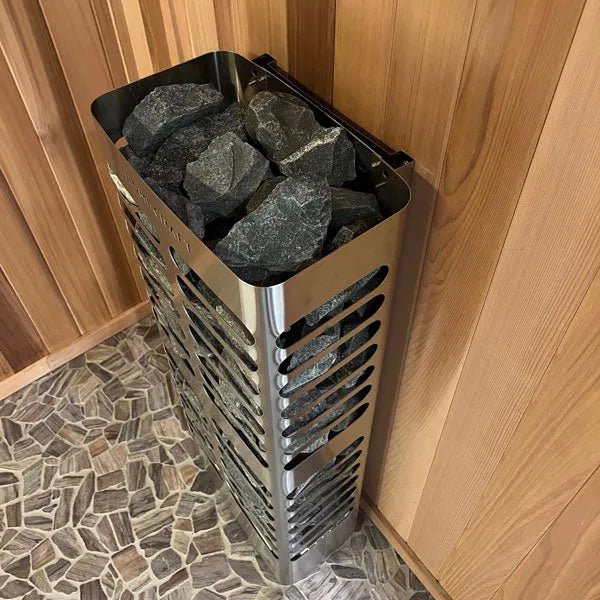Article: Dry Heat vs Wet Heat

Dry Heat vs Wet Heat
Dry Heat vs. Wet Heat in Saunas: What’s the Difference and Which One is Right for You?

If you’ve ever stepped into a sauna, you’ve probably noticed the heat can feel quite different depending on the type of sauna you’re in. Some saunas have that dry, intense heat, while others feel steamy and humid. But what’s the difference between dry heat and wet heat in a sauna, and why should you care? Let’s dive into both types and help you figure out which one might be the best fit for your sauna experience.
Dry Heat:
Dry heat is the classic sauna experience that many people are familiar with. It’s typically provided by an electric heater or a wood-burning stove, which heats the air inside the sauna, raising the temperature. In a dry sauna:
- The air is heated to a high temperature (usually between 150°F to 195°F or 65°C to 90°C), but the humidity remains low, typically around 10% to 20%.
- The heat is absorbed by the skin, promoting sweating, which in turn helps detoxify the body and open pores for improved circulation and skin health.
- The primary sensation of dry heat is the intense warmth without moisture, which can make breathing feel drier but can be more comfortable for some people who prefer a hot environment with minimal humidity.
Wet Heat:
Wet heat is typically associated with a steam sauna, where the air is made more humid by adding water to the heated stones in the sauna, or a steam room where water vapor is continuously released.
- Wet heat is often used in saunas that have a mechanism where water is poured over the heated stones, generating steam and increasing the humidity. This raises the relative humidity in the sauna to as high as 40% to 60%, while temperatures are typically a bit lower than in dry saunas (often around 110°F to 130°F or 45°C to 55°C).
- The higher humidity in wet heat makes the air feel hotter and more suffocating. It can also enhance the experience for respiratory benefits, as the moisture can help open airways, clear congestion, and moisturize skin.
- Wet heat is often preferred by people who enjoy a softer, more intense sweating experience with the added benefit of moisturizing the skin, which makes it feel more soothing for some individuals.
2. Why People Choose Dry vs. Wet Heat
Both dry and wet heat have unique health benefits and appeal to different preferences:
Benefits of Dry Heat:
- Intense Sweating: Dry heat promotes profuse sweating, which some people prefer because it feels more intense and potentially more detoxifying.
- Better Circulation: The heat improves blood circulation, which can be beneficial for muscle relaxation and recovery.
- Skin Health: It opens up the pores, allowing the body to release toxins, which can improve skin tone and appearance.
- Muscle Relaxation: Dry saunas are also popular for their muscle-relaxing properties, helping to ease tension and promote relaxation after physical exertion.
Benefits of Wet Heat:
- Respiratory Health: The moist air helps with respiratory function, which is particularly beneficial for people with asthma, bronchitis, or sinus congestion. The steam helps clear the airways and can be soothing for people who struggle with dry air.
- Soothing to the Skin: The humidity can be beneficial for individuals with dry skin, as the moisture helps hydrate and soothe the skin.
- Lower Heat Intensity: Because the humidity makes the air feel hotter, the overall temperature of the sauna is lower than a dry sauna, which can be more comfortable for some people who find dry heat too intense.
- Relaxation: Some find the humid environment of wet heat to be more relaxing and calming, providing a gentler, more enveloping sauna experience.

